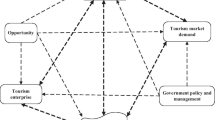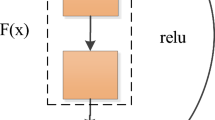Abstract
With the rapid development of tourism e-commerce in China, how to evaluate the effectiveness of tourism e-commerce service innovation in the e-commerce field has become an important and critical issue. Drawing on pertaining literature, this paper chooses the back propagation (BP) neural network model to evaluate the effectiveness of tourism e-commerce service innovation. The study first establishes the evaluation index system that is consistent with the characteristics of the tourism e-commerce service industry and selects ten tourism e-commerce service providers to conduct an empirical analysis. Then Matlab7.0 is employed to simulate this evaluation model and to draw the corresponding conclusions. Finally, this paper summarizes the limitations of the study and proposes future research avenues. The insightful results of this study can mirror the development situation of tourism e-commerce and provide an effective evaluation framework for the tourism e-commerce service innovation performance in China.



Similar content being viewed by others
References
Barras, R. (1986). Towards a theory of innovation in services. Research Policy, 15, 161–173.
Basheer, I. A., & Hajmeer, M. (2000). Artificial neural networks: fundamentals, computing, design, and application. Journal of Microbiological Methods, 43(1), 3–31.
Bilderbeed, P., Hertoy, R., Marklund, G. & Miles, I. (1998). Services in innovation: Knowledge Intensive Business Services (KIBS) as co-producers of innovation. SI4S paper no. 3, published by STEP, Oslo.
Chen, J. (2008). Knowledge-clustering service and creative service (In Chinese). Economics 66–75.
Chia, C. (2010). A performance evaluation model by integrating fuzzy AHP and fuzzy TOPSIS methods. Expert Systems with Applications, 37(12), 7745–7754.
Christiane, H., & Hariolf, G. (2005). Innovation in the service sector: the demand for service-specific innovation measurement concepts and typologies. Research Policy, 34(4), 517–535.
Demosthenes, A. (2010). Electronic community factories: the model and its application in the tourism sector. Electronic Commerce Research, 10(1), 43–81.
Djellal, F., & Gallouj, F. (2001). Patterns of innovation organization in service firms: portal survey results and theoretical models. Science and Public Policy, 5(28), 57–67.
Drejer, I. (2004). Identifying innovation in surveys of services: a Schumpeterian perspective. Research Policy, 33(3), 551–562.
Gallouj, F. (1998). Innovating in reverse: services and the reverse product [J]. European Journal of Innovation Management, 13, 123–138.
Gulcin, B., & Da, R. (2008). Evaluation of software development projects using a fuzzy multi-criteria decision approach. Mathematics and Computers in Simulation, 77, 464–475.
Hecht-Nielsen, & Counter, R. (2001). Propagation networks. Applied Optics, 6, 4979–4984.
Helmut, B., et al. (2007). Opening new dimensions for e-tourism. Virtual Reality, 11, 75–87.
Hipp, C., Tether, B. S., & Miles, I. (2000). The incidence and effects of innovation in services: evidence from Germany. International Journal of Innovation Management, 4(4), 417–453.
Ho, C. I., & Lee, Y. L. (2007). The development of an e-travel service quality scale. Tourism Management, 2007(28), 1434–1449.
Hu, L., & Jiang, Z. (2008). Evaluation on innovation enterprises based on BP neural networks. Innovation Research, 22(2), 116–127.
IResearch report (2011). http://www.iresearch.com.cn/Report/1570.html.
Jasminko, N., & Gerhard, S. (2009). Designing for reintermediation in the brick-and-mortar world: towards the travel agency of the future. Electronic Markets, 19(1), 15–29.
Kak, S. (2002). A class of instantaneously trained neural networks. Information Sciences, 148(1–4), 97–102.
Kline, S. J., & Rosenberg, N. (1986). An overview of innovation. In R. Landau & N. Rosenberg (Eds.), The positive sum strategy: Harnessing technology for economic growth (pp. 275–305). Washington, DC: National Academy Press.
Kun, W. (2008). A Matlab toolbox for grey clustering and fuzzy comprehensive evaluation. Advances in Engineering Software, 39(2), 137–145.
Liu, J., & Lu, Z. (2004). Development, distribution and evaluation of online tourism services in China. Electronic Commerce Research, 4(3), 221–239.
Lu, J., Tang, S., & McCullough, G. (2001). An assessment for internet-based electronic commerce development in businesses of New Zealand. Electronic Markets: International Journal of Electronic Commerce& Business Media, 11(2), 107–115.
Milbergs, E., & Vonortas, N. (2004). Innovation metrics: Measurement to insight. America: National Innovation Initiative 21st Century Working Group.
Miles, L. (2008). Patterns of innovation in service industries. IBM Systems Journal, 47(1), 115–128.
Minna, K., Hugo, H. & Anthony, A. (2006). Can we measure and compare innovation in services? Trend Chart Report, 2006.
Normann, R. (1991). Service management. Strategy and leadership in service business. Chichester: John Wiley.
Patier, D., & Browne, M. (2010). A methodology for the evaluation of urban logistics innovations. Procedia - Social and Behavioral Sciences, 2(3), 6229–6241.
Pavitt, K. (1984). Sectoral patterns of technical change: towards a taxonomy and a theory. Research Policy, 13(6), 343–373.
Poon, A. (1993). Tourism, technology and competitive strategies. Oxford: CAB International.
Richard, C. M., & Kam, C. (2006). A study of the relationship between competitiveness and technological innovation capability based on DEA models. European Journal of Operational Research, 170(3), 971–986.
Robert, J., & Porter, L. (1997). Innovation forecasting. Technological Forecasting and Social Change, 56(1), 25–47.
Straub, D., Marie-Claude, B. & David, G. (2004). Validation Guidelines for IS Positivist Research. Communications of the Association for Information Systems (AIS), 13.
The competitiveness of Chinese online travel site Top15-New Way of Ranking. Internet Weekly, 73, June 2009.
Triplett, J., & Bosworth, B. (2003). Productivity measurement issues in services industries: “Baumol’s disease” has been cured. FRBNY Economic Policy Review, 9(3), 23–33.
Werthner, H., & Ricci, F. (2004). E-commerce and tourism. Communication ACM, 47(12), 101–105.
Wu, G.S. (2003). Services Innovation. Tsinghua University Press.
Zhang, G., Tian, J., & Zeng, W. (2009). Binary relative evaluation for government websites performance: a case study from China (in Chinese). Information Technology and Applications, 3, 664–668.
Acknowledgements
This research was supported by the NCET Foundation of Fujian Province of China 2007, and the Fundamental Research Funds for the Central Universities under Grant 2013221028. In addition, we heartily thank the three anonymous reviewers and the responsible editor for their insightful comments which have significantly helped improve the previous versions of this article.
Author information
Authors and Affiliations
Corresponding author
Additional information
Responsible Editor: Xin Luo
Rights and permissions
About this article
Cite this article
Peng, L., Lai, L. A service innovation evaluation framework for tourism e-commerce in China based on BP neural network. Electron Markets 24, 37–46 (2014). https://doi.org/10.1007/s12525-013-0148-0
Received:
Accepted:
Published:
Issue Date:
DOI: https://doi.org/10.1007/s12525-013-0148-0




